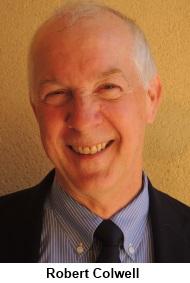在日前舉行的“Hot Chips”大會上,發表專題演講的專家指出,摩爾定律--相同面積的晶圓上所容納的晶體管數每兩年增加一倍,到2020年會達到7納米節點,之后便會失效。
雖然業界有很多人都預測摩爾定律將走向終結,但很少有人能夠提出深入且具說服力的解釋。隨著光刻技術進展停滯不前以及加工技術逐漸面臨原子極限,業界的種種預測也越來越多。
“對于時程的規劃,我認為2020年將會是摩爾定律終結的最早日期。”美國國防部先進研究計劃署(DARPA)微系統技術辦公室總監羅伯特•考威爾(Robert Colwell)表示,“你或許會說是2022年,但無論是發生在7納米或5納米節點時,它都是個大問題。”Robert Colwell曾是負責英特爾“奔騰”處理器設計團隊的工程師。

過去三十年里,摩爾定律持續呈指數級增長,速度從1MHz提升到5GHz,增加了大約3,500倍。相比之下,智能構架同期才提升了50倍左右,他指出。
指數級增長的終結通常由于本身無法持續自然地進展。Colwell表示,遺憾的是,這樣的機會并不多見。
“我并不指望未來30年還能在電子產業看到另一個3,500倍的速度提升,50倍還是有可能的。”Colwell表示,“我認為區區年平均10%的增長不足以創造理想的利潤空間。”
對于很多人還盲目地相信工程師們將會找到另一個指數級增長曲線以取代摩爾定律,Colwell給他們潑了盆冷水,他說“我們或許能進行一大堆的調整,但卻無法解決指數級的損失。”
DARPA列出了多達30種可能取代摩爾定律主流CMOS 技術的替代方案。Colwell說,“我個人認為其中有兩、三種有前景的方案,但卻都不被看好。”
DARPA的微系統部門有兩個資金充分的計劃。一個是探索近似計算的計劃,稱之為“Upside”;另一個是探索自旋力矩振蕩器的影響,以解決部分方案在相對較低功耗時所遇到的問題。
Colwell還列出可改善芯片后CMOS技術的其它方式,包括3D堆疊、新架構與應用程序、新的開關技術、更好的人機介面,以及簡單的創意營銷等。
Colwell提出了幾種詳細方案。另外,Colwell指出“針對人機介面優化還有大量工作要做,能找到更好互動方式的人就能取得成功。”
隨著摩爾定律逐漸接近尾聲,他表示,“如果摩爾定律終結了,那也會是由于經濟原因,而不是物理原因,所以看緊你的錢包吧!”
也就是說,推動芯片持續向前進展的新機會將會出現,因此,工程師們必須“隨時改變設計思維,但同時也規劃未來,因為一切已不太遙遠了,”他說。
來源:eetimes
英文原文:
Moore's Law Dead by 2022, Expert Says
Moore's Law -- the ability to pack twice as many transistors on the same sliver of silicon every two years -- will come to an end as soon as 2020 at the 7nm node, said a keynoter at the Hot Chips conference here.
While many have predicted the end of Moore's Law, few have done it so passionately or convincingly. The predictions are increasing as lithography advances stall and process technology approaches atomic limits.
"For planning horizons, I pick 2020 as the earliest date we could call it dead," said Robert Colwell, who seeks follow-on technologies as director of the microsystems group at the Defense Advanced Research Projects Agency. "You could talk me into 2022, but whether it will come at 7 or 5nm, it's a big deal," said the engineer who once managed a Pentium-class processor design at Intel.
Moore's Law was a rare exponential growth factor that over 30 years brought speed boosts from 1 MHz to 5 GHz, a 3,500-fold increase. By contrast, the best advances in clever architectures delivered about 50x increases over the same period, he said.
Exponentials always come to an end by the very nature of their unsustainably heady growth. Unfortunately, such rides are rare, Colwell said.
"I don't expect to see another 3,500x increase in electronics -- maybe 50x in the next 30 years," he said. Unfortunately, "I don't think the world's going to give us a lot of extra money for 10 percent [annual] benefit increases," he told an audience of processor designers.
Colwell poured cold water on blind faith that engineers will find another exponential growth curve to replace Moore's Law. "We will make a bunch of incremental tweaks, but you can't fix the loss of an exponential," he said.
DARPA tracks a list of as many as 30 possible alternatives to the CMOS technology that has been the workhorse of Moore's Law. "My personal take is there are two or three promising ones and they are not very promising," he said.
DARPA's microsystems group has "a fair amount of money chasing" two programs. One is exploring approximate computing in a program called Upside; another is exploring the effects of spin-torque oscillators to settle on partial solutions at relatively low power.
Colwell ticked off a list of other routes to improving chips post-CMOS, including 3D stacking, new architectures and apps, new switching technologies, better human interfaces, and just plain creative marketing. "You laugh, but you will see this," he said, citing Intel's dolls of fab workers.
Colwell called out a few specifics, such as work building devices at the level of a hundred to a thousand atoms. In addition, "there's a lot of work in brain-machine interfacing -- people who figure out better interfaces will win," he said.
As the end approaches, "when Moore's Law stops it will be economics that stops it, not physics, so keep your eye on the money," he said.
That said, new opportunities will emerge to nudge chips forward, so engineers need to "keep designing our heads off, but at the same time plan for the future because it's not that far off," he said.

 粵公網安備 44030902003195號
粵公網安備 44030902003195號